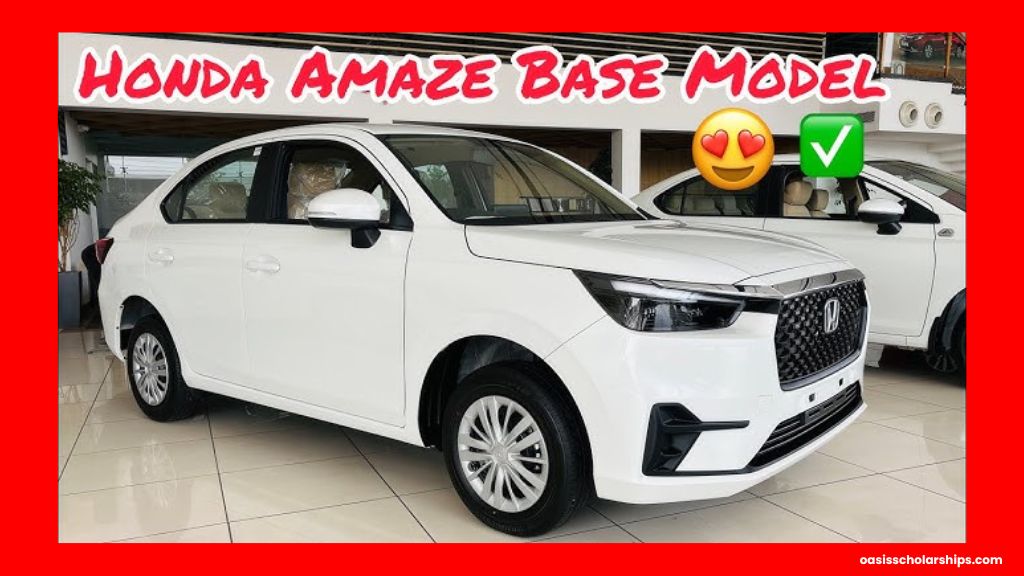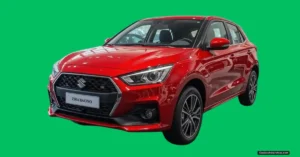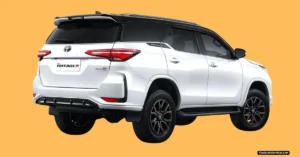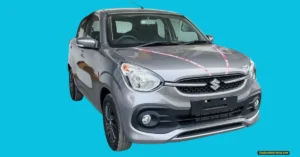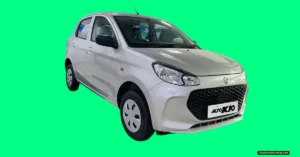If you’re eyeing a new compact sedan, you’ve probably seen the Honda Amaze 2025 making waves. With new design touches, advanced features like ADAS, and updated tech, it pops right out on the road.
But with fierce rivals like the Maruti Suzuki Dzire, does the all-new Amaze truly offer the best deal at its price, or are you better off choosing a competitor? After spending quality time with the Honda Amaze 2025, here’s my full take on its 6 key upgrades and how it stacks up daily.
What’s New in the Honda Amaze 2025 6 Upgrade Features 2025 Model?
The Honda Amaze 2025 rolls in with sharper lines, a refreshed face, and modern tech that makes it stand out. Honda packed in plenty of features: new infotainment, the option for ADAS driver assists, that sleek center strip on the grille, and both manual and CVT automatic gearboxes.
Highlights in the Honda Amaze 2025 6 upgrade features 2025 model:
- Bold, updated front fascia and rear LED lights
- Enhanced infotainment with smartphone connectivity
- Honda Sensing (ADAS) available in higher trims
- Improved noise insulation over the earlier model
- Cruise control, automatic climate, push-button start in mid/top trims
- Modern alloy designs and paint colors
These touches give it strong showroom appeal. But as always, real ownership goes beyond the spec sheet. Is Amaze’s new look and tech enough to make it a value king, or do you end up spending more for less? Let’s check comfort, performance, cost, and everyday feel, step by step.
Comfort Faceoff: Front and Rear Seats Analyzed
Front Seat Experience: Good, but Some Misses
Jumping into the new Amaze, the first thing you notice is the seating. For most, especially those under 5’10”, comfort levels feel decent. But if you’re tall—think six feet or more—you may feel let down by the under-thigh support. Back support is average and the seat padding isn’t as plush as I’d hoped.
Comparing with the Dzire, Maruti’s front seats offer:
- Better thigh support, even for those around 6’2”
- Cushioning that feels thicker and more supportive
- Slightly deeper backrest for long hours behind the wheel
The Amaze’s seats are fine for shorter drives, but you’ll sense the difference during longer stints, especially if you’re on the taller side.
Front Seat Comfort Comparison: Honda Amaze vs Maruti Dzire
| Feature | Honda Amaze 2025 | Maruti Suzuki Dzire |
|---|---|---|
| Under-thigh support | Average | Above average |
| Back support | Average | Great |
| Cushioning | Slightly firm | Plush, comfortable |
| Tall driver comfort | Flatter | Spacious, cushioned |
Rear Seat: Mostly Equal, with One Important Miss
Rear comfort in the Amaze and Dzire is neck and neck. Both feel roomy and the seat base gives good support for passengers. Where the Amaze slips, though, is rear headrest adjustability. Even the top model skips adjustable rear headrests—odd, considering most rivals offer them at this price. For long trips or if you often have taller friends or parents in the back, this missing feature could be a letdown.
Engine and Performance: How Does the Amaze 2025 Drive?
The Amaze packs a 1.2-liter i-VTEC petrol mill under the hood. It puts out around 90 PS of power and 110 Nm of torque. Thanks to its four-cylinder layout, the engine runs more smoothly and quietly compared to the Dzire’s three-cylinder option. Honda’s reliability reputation adds confidence for long-term ownership.
Key Engine Specs:
- Displacement: 1.2-litre i-VTEC Petrol
- Power: ~90 PS
- Torque: 110 Nm
- Cylinders: 4
Performance Zones: City & Highway Driving
On city roads and at low speeds, the Dzire shines. Its engine offers stronger low-end torque, meaning you don’t need to press as hard on the pedal to get moving. Quick lane changes or overtaking slow movers in traffic happens with less effort.
The Amaze feels a little flat here—there’s enough performance for city commutes, but it isn’t as lively as the Dzire in traffic or while accelerating from low speeds.
Top-End Power: Amaze Takes the Lead
Things flip at higher revs. If you hit the highway or drive in hilly areas and need to overtake at speed, the Amaze’s engine wakes up after 5000 RPM. Here, it pulls harder and feels more responsive than the Dzire. You feel this especially when overtaking trucks or while carrying a full load.
Side-by-Side Driving Feel
- Amaze: Quieter and smoother engine, shines above 5000 RPM, ideal for higher-speed runs and overtakes.
- Dzire: More punch at low speeds, easier for quick getaways and city traffic.
My Tip: Always Test Drive
Before picking one over the other, drive both the Amaze and Dzire on your usual routes to see which suits your style. Push them both in urban as well as open roads, and notice:
- How much effort it takes to accelerate from a stop
- Engine sound and smoothness at higher revs
- Comfort when taking quick overtakes
Test Drive Checklist
- Try both at rush hour and empty roads
- Take along the family to check comfort for all
- Drive a manual and automatic if you’re unsure which fits your needs
- Note which feels less tiring after 20-30 minutes
Fuel Efficiency: What Will It Cost to Run?
Claimed Mileage Numbers
Honda claims around 19 km/l for the Amaze petrol, which is solid for a sedan of its size. But Maruti’s Dzire is known for its frugal engines, regularly returning 6 km/l more. Over time, this adds up—especially for high-mileage users.
Mileage Comparison:
- Honda Amaze: ~19 km/l (claimed)
- Maruti Dzire: ~25 km/l (claimed/petrol MT)
- Real-world may be slightly less, but the gap remains
Your Driving Habits Matter
If you only drive 400-600 km a month, both cars will sip fuel slowly enough that the difference won’t pinch. But if your daily runs top 30-40 km or you’re frequently on highways—think 1,000 km/month or more—the extra efficiency of the Dzire means clear savings.
Monthly Savings Example (Petrol at ₹100/litre):
- 1,000 km/month
- Amaze: 1,000/19 km/l = ~52.6 litres = ₹5,260
- Dzire: 1,000/25 km/l = 40 litres = ₹4,000
- Difference: ₹1,260/month, or ₹15,120/year!
Fuel Efficiency At a Glance:
- Short/occasional trips: Pick for comfort/features, not just mileage
- Long daily runs: Dzire will help your wallet, especially with CNG
Transmission Choices: Smooth CVT or Budget AMT?
Honda offers a CVT (Continuously Variable Transmission) in the Amaze. This gearbox brings buttery gear changes and easy city driving. If you hate the head-jerk sometimes found in typical AMT “automated manuals,” this is a huge plus.
But there’s a hitch—the CVT bump adds a chunk to the price. The automatic trim of the Amaze costs roughly ₹1.2 lakh more than an AMT-ready Dzire. That’s not pocket change.
Transmission Price Snapshot:
- Amaze CVT vs Dzire AMT: ~₹1.2 lakh difference
While the Amaze CVT is a joy in stop-go traffic, you’ll need to decide if that smoothness justifies the jump in price.
Manual Gearbox: More Value, More Control
If you prefer shifting gears yourself, both Amaze and Dzire base trims are worthy picks. The Amaze’s manual feels direct and light, good for daily use. Most value-conscious buyers will find the lower-manual trims hit the sweet spot.
The fully-loaded Amaze CVT feels tough to recommend for value unless your roads are silk-smooth and you’re always in crawling traffic.
Transmission Pros and Cons:
- Amaze CVT
- Pros: Super smooth shifts, perfect for city use, less tiring
- Cons: Expensive, not as fuel-efficient as manual
- Dzire AMT
- Pros: Most affordable auto, easy to drive
- Cons: Shifts can be jerky, feels “cheaper”, but good for the price
- Manual (Both)
- Pros: Lowest price, more control, top mileage
- Cons: More work in traffic
Design, Colors, and Build Quality: Does the Amaze Feel Premium?
The Amaze 2025 looks sharp. Its new central grill strip and LED details bring fresh appeal. The car looks especially good in red or lighter shades, which highlight its lines. Personally, I find the blue variant a bit odd and less impactful—though that’s in the eye of the beholder. Choosing the right color can make or break its visual appeal on the road.
Inside Story: Plastics and Accents Feel Cost-Cut
Step inside, and you’ll notice where Honda pinched pennies. The dashboard plastics and air vents feel a bit flimsy. It doesn’t match the soft-touch or heavier premium feel you might find in rivals or previous Hondas. While the layout looks modern, a tap on the dash reminds you this is a budget sedan.
Should You Buy the Honda Amaze 2025? My Recommendations
With all upgrades and its sharp looks, the Honda Amaze 2025 6 upgrade features 2025 model wins on refinement, high-RPM performance, and city maneuverability—especially if you value a smooth CVT automatic. It’s roomy, reliable, and comes packed with Honda’s trusted engineering.
But, if you’re:
- Focused on saving every rupee in running costs
- Need cushy, supportive seats for taller family members
- Want CNG as a fuel option
- Care most about value for money and lowest total ownership cost
then Maruti’s Dzire edges ahead. It offers better fuel efficiency, plusher seats, and more affordable automatic variants. The missing rear adjustable headrest in Amaze is a minor, but real, comfort miss at this price.
My advice: Test drive both on your regular routes—city and highway, short and long trips. Bring family or friends. Pay attention to seat comfort and running costs based on your real-life monthly usage.
Conclusion
The Honda Amaze 2025 brings clear upgrades: fresh design, modern tech, and a smooth engine. Its six standout features show Honda’s intent to woo compact sedan buyers who want comfort, safety, and style in one compact package. Still, the Dzire runs neck-and-neck—or even ahead—in costs, daily usability, and some smart features.
